Picking the color of your potential Great Dane can be a really hard choice.
During your research, you’ve probably stumbled upon many confusing labels that seem to describe the same color or there seems to be an endless number of Great Dane colors.
How can you be certain you’re really describing the color you want to your potential breeder?
Or what should you tell others when they ask about your rescued Great Dane?
Last but definitely not least, does color matter when it comes to health?
Yes, it’s quite important.
I’ve included various research sources as well as breed standards/clubs in this article to make it as comprehensive as possible.
Let’s dive right in by checking what colors are officially recognized by the AKC.
There are 7 official Great Dane colors:
- Harlequin
- Merle
- Blue
- Black
- Brindle
- Fawn
- Mantle
Each and every color has its own genetic history and different health implications.
There are far more colors than those mentioned, but for the sake of this article, we’ll focus on the official colors.
Other colors the Great Dane comes in include chocolate, brown, silver, combinations of the ones mentioned above, and white (Albinism – not at all desired due to eye and hearing problems which can lead to behavioral issues).
Harlequin Great Dane
The AKC mentions the following about the Harlequin Great Dane:
Base color shall be white with black torn patches. Merle patches are normal. Black torn patches well distributed over the body; with whole or partial white neck. Black pigment may be seen on the skin in white areas. No patch should be so large as it appears to be a blanket. (…)
AKC Great Dane breed standard
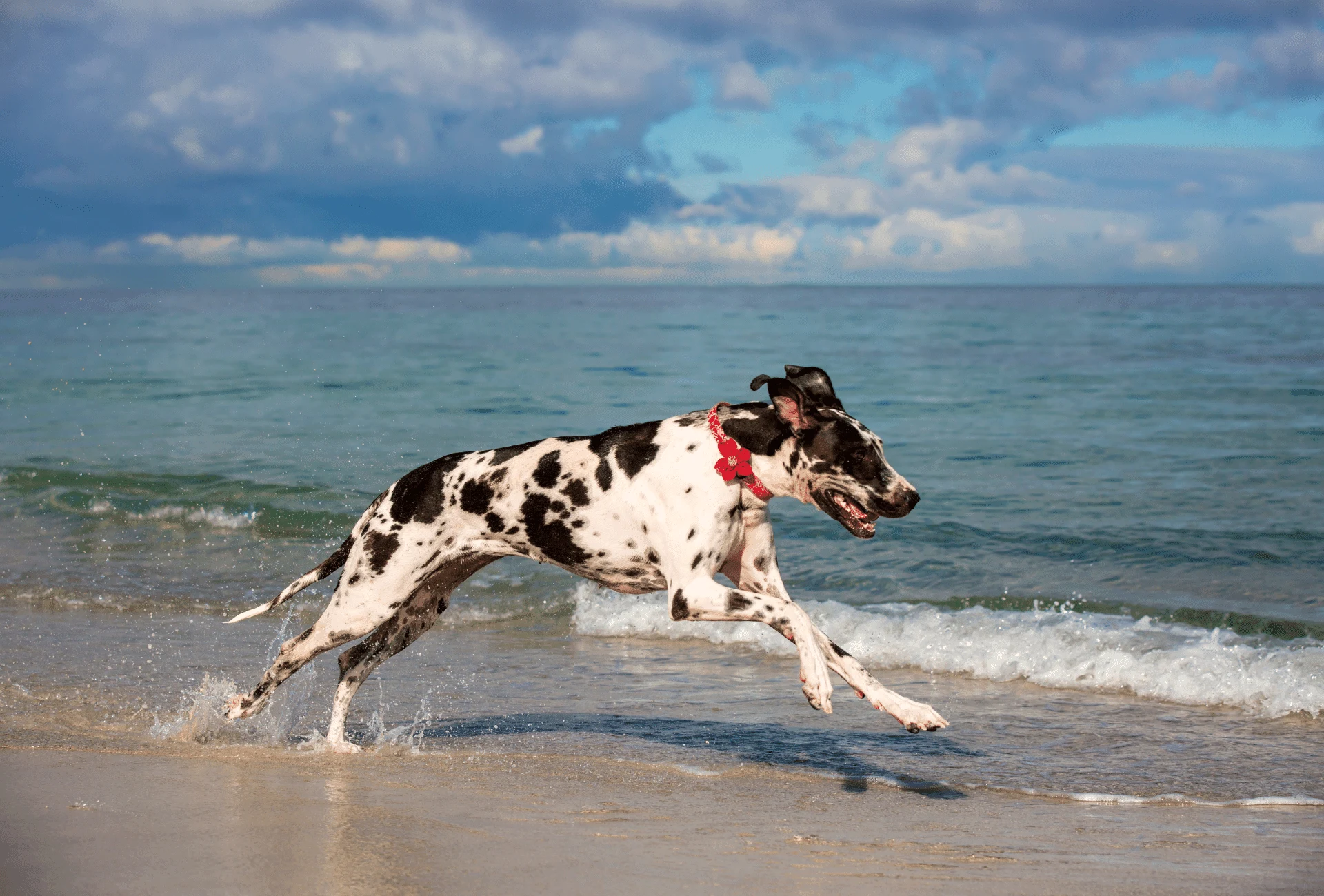
This type of coat color comes in lots of variations since the white-black splotches can be distributed differently.
This coat color is the signature look of the Dalmatian and smaller Great Danes might even be mistaken for Dalmatians.
According to a study by O’Sullivan and Robinson, the hypothesis Sponenberg created in 1985 proved to be true for Harlequin Great Danes:
Breeding data (…) confirm (…) that the harlequin colour of the Great Dane breed of dog is due to the combined action of a dominant gene H with the merle gene M in the genotype H+M+.
Furthermore, they state the following:
The typical bluish coloration induced by M is modified to white by the action of H.
The H gene is a prenatal lethal when homozygous HH and this study offers a clear indication that the heterozygous H+ interacts with M to reduce the viability of white merle homozygotes H+MM.
Due to their white coat, it may be important to know about the health implications this can have. We’ll go into more detail on health below.
Fun fact: A harlequin Great Dane is currently the fourth largest dog ever measured (107cm / 42.2 in) and hasn’t fallen behind place four since 2004.
Merle Great Dane
Merle is a favorite color across many breeds, most prominently Australian Shepherds and Border Collies.
A pale gray to dark gray merle base color with black torn patches within.
May be Solid Merle (white on chest and toes is permissible) or Merle with a Mantle Pattern (solid merle blanket extending over the body; merle skull with a white muzzle; white blaze is optional; whole or partial white neck; a white chest; white on whole or part of the forelegs and hind legs; white tipped merle tail.
A small white break in the blanket is acceptable. (Black pigment may be seen on the skin in white areas.)
AKC Great Dane breed standard

A common health issue of the merle Great Dane is actually deafness and blindness, with some dogs being very sensitive to sunlight or having skin issues like higher rates of cancer.
Although uncommon in heterozygous merles, they’re quite common in homozygous merle dogs.
A heterozygous merle dog has one merle parent and homozygous dogs have two merle parents.
The latter causes lots of problems, so I’d definitely recommend that you’re inquiring about this (as you should want to see the parents, health testing, etc. anyway) when you’re deciding which breeder you want to go with.
For those who are interested in a slightly longer paper explaining the merle coat color, I can recommend checking out the merle paper by the GDCA (Great Dane Club of America).
Blue Great Dane
The Great Dane’s blue color is described as a “pure steel blue”.
As far as markings go, white on the toes or chest is not desirable according to AKC standard.
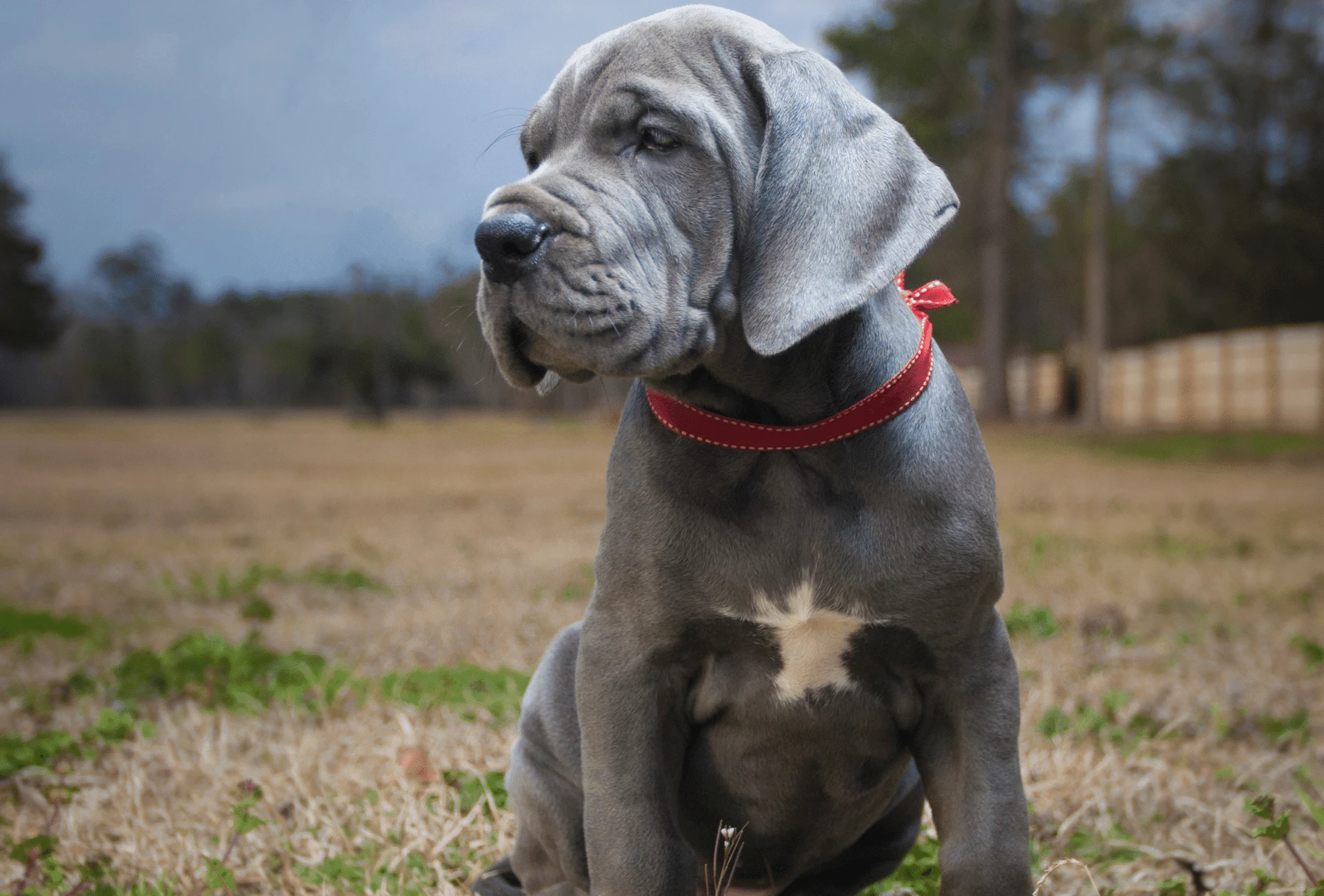
The blue color is labeled differently for each and every breed and while it’s a dead giveaway when somebody calls his Cane Corso puppies blue instead of “gray”, it’s the right terminology for the Great Dane.
It’s not really silver, even though I’ve heard of Great Dane owners whose puppies have been confused with Weimaraners.
Call it gray, silver, or blue – this coat can definitely look awesome.
Black Great Dane
The glossy black Great Dane is intended to have no white patches on the toes or chest.
However, they often come with a white patch on the chest. All black Great Danes are possible too.
It all comes down to personal preferences but according to a study by Stanley Coren, the so-called “Big Black Dog Syndrome” might be a real thing.
The study was done with black/brown/yellow Labradors, but which breed deserves the “big” better than the tallest dog breed in the world?
People may perceive your black Great Dane as more threatening, even though there’s no scientific evidence for behavioral issues related to the black coat color, of course.
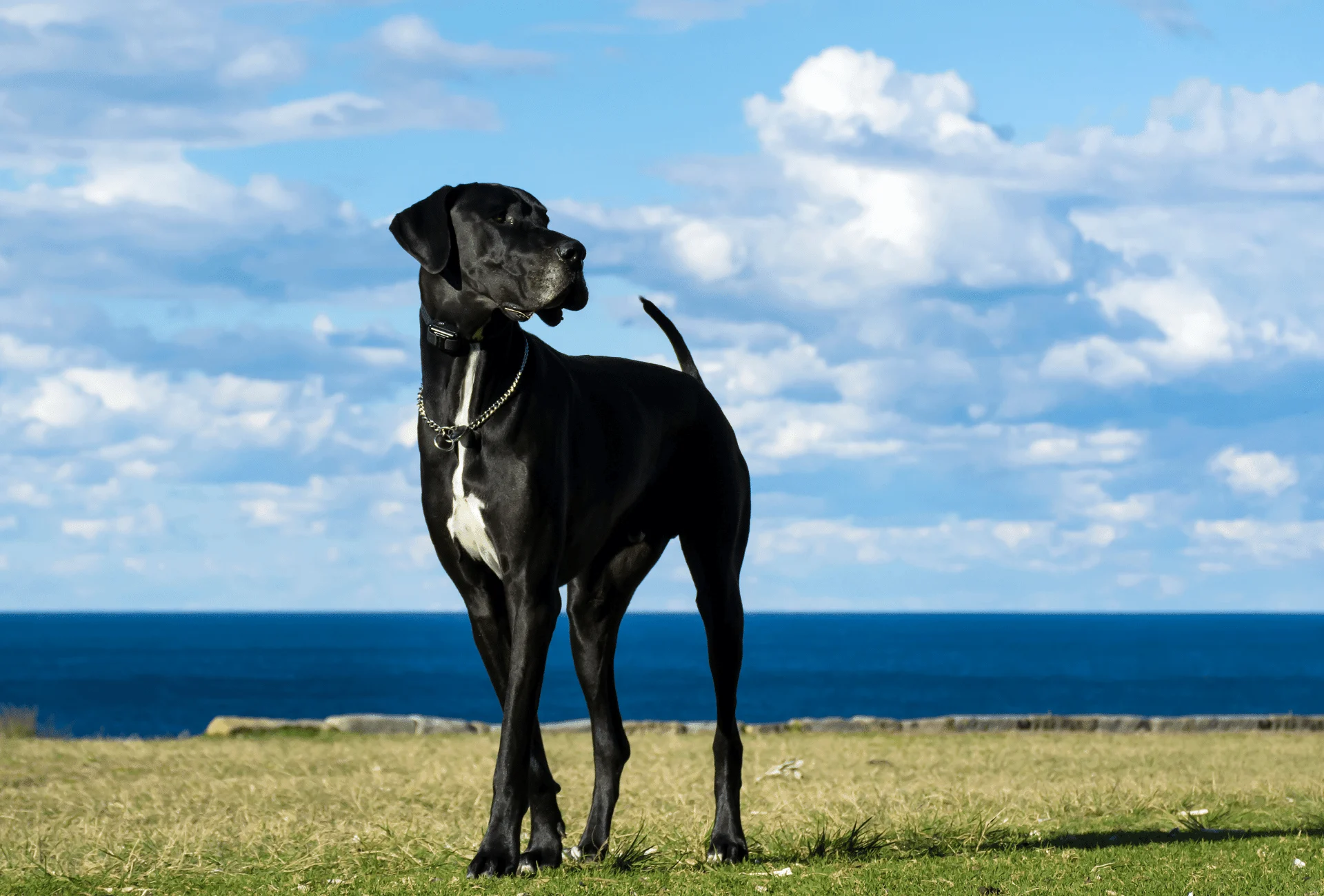
The current holder of the title “world’s largest dog” according to the Guinness World Records is actually a black Great Dane with 1.118 m (44 in) of height and 70.30 kg (155 lb).
Despite their average life expectancy of 8-10 years, Zeus passed away at only 5 years of age in 2014.
This color pattern is quite common and can sometimes be hard to distinguish from harlequin or mantle colors since there are only slight differences like white as the base color instead of black with a white patch or instances where the white extends over the neck.
Brindle Great Dane
Brindle is a color pattern with a distinguishable base color and (black) stripes on top of it.
For some breeds, there are colors like reverse brindle and the brindling can vary in color and degree.
Really intense base colors where the stripes seem to be really distinct are preferred.
If the pattern looks very smooth across the coat, it’s also a plus.
The base color shall be yellow gold and always be brindled with black cross stripes.
Brindle shall have a black chevron pattern with a black mask. Black should appear on the eye rims and eyebrows and may appear on the ears and tail tip.
AKC Great Dane breed standard
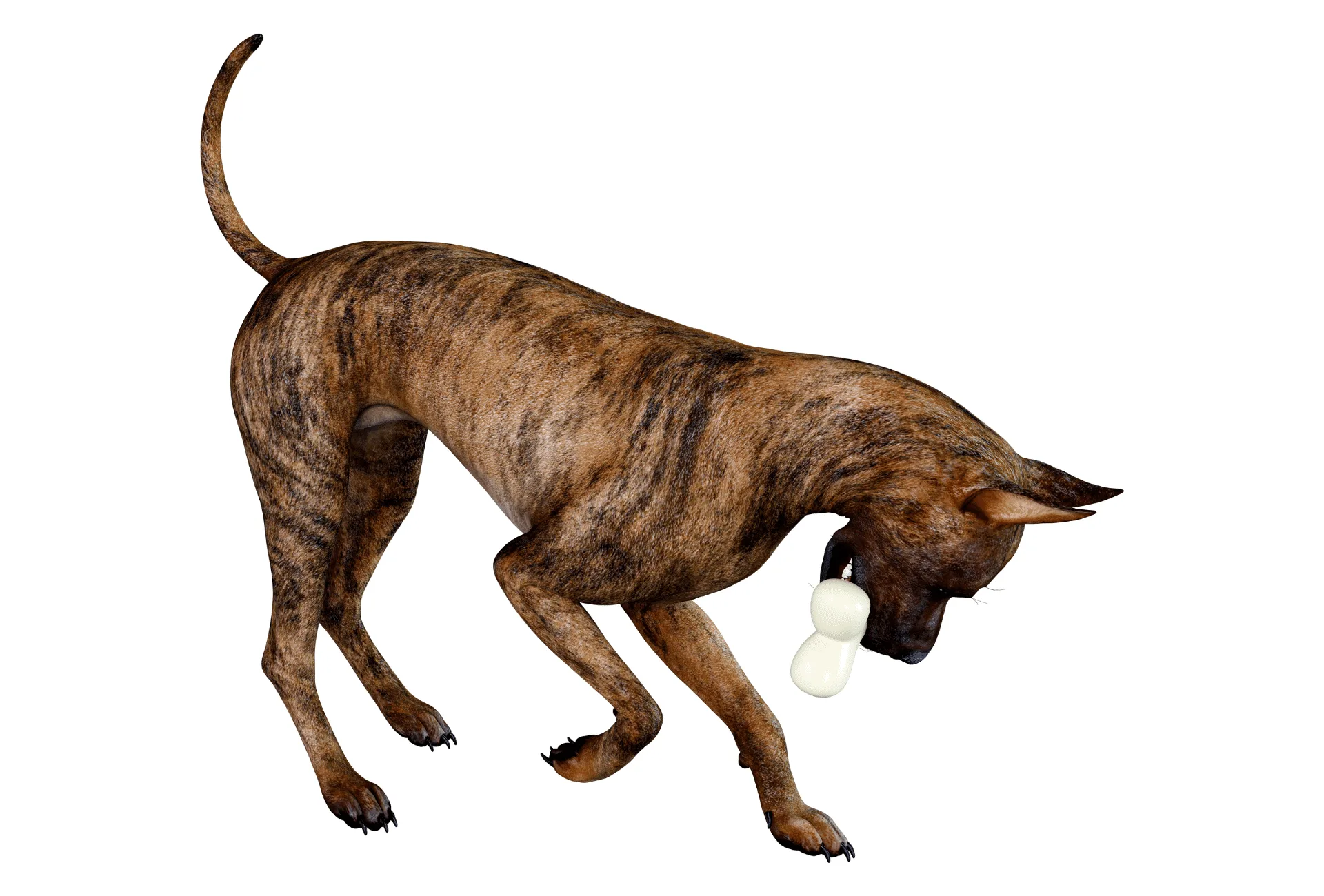
If you plan on showing your dog in competitions, it’s good to know that too much or too little brindling might score undesirably.
In case you’re not doing confirmation, the brindling isn’t all that important as long as the pups are healthy.
For rescues, I’d just recommend loving the dog as is since the brindling will absolutely not matter, except for appearance.
Fawn Great Dane
This color is also known as red, bronze, cream, brown, yellow, or gold.
Rich bronze reds are really dark reds and cream is on the light red end of the spectrum.
While not officially recognized, some people also refer to them as brown, yellow, or gold if the fawn pattern is very light.
The color shall be yellow gold. Black should appear on the eye rims and eyebrows with a black mask and may appear on the ears and tail tip. (…)
AKC Great Dane breed standard
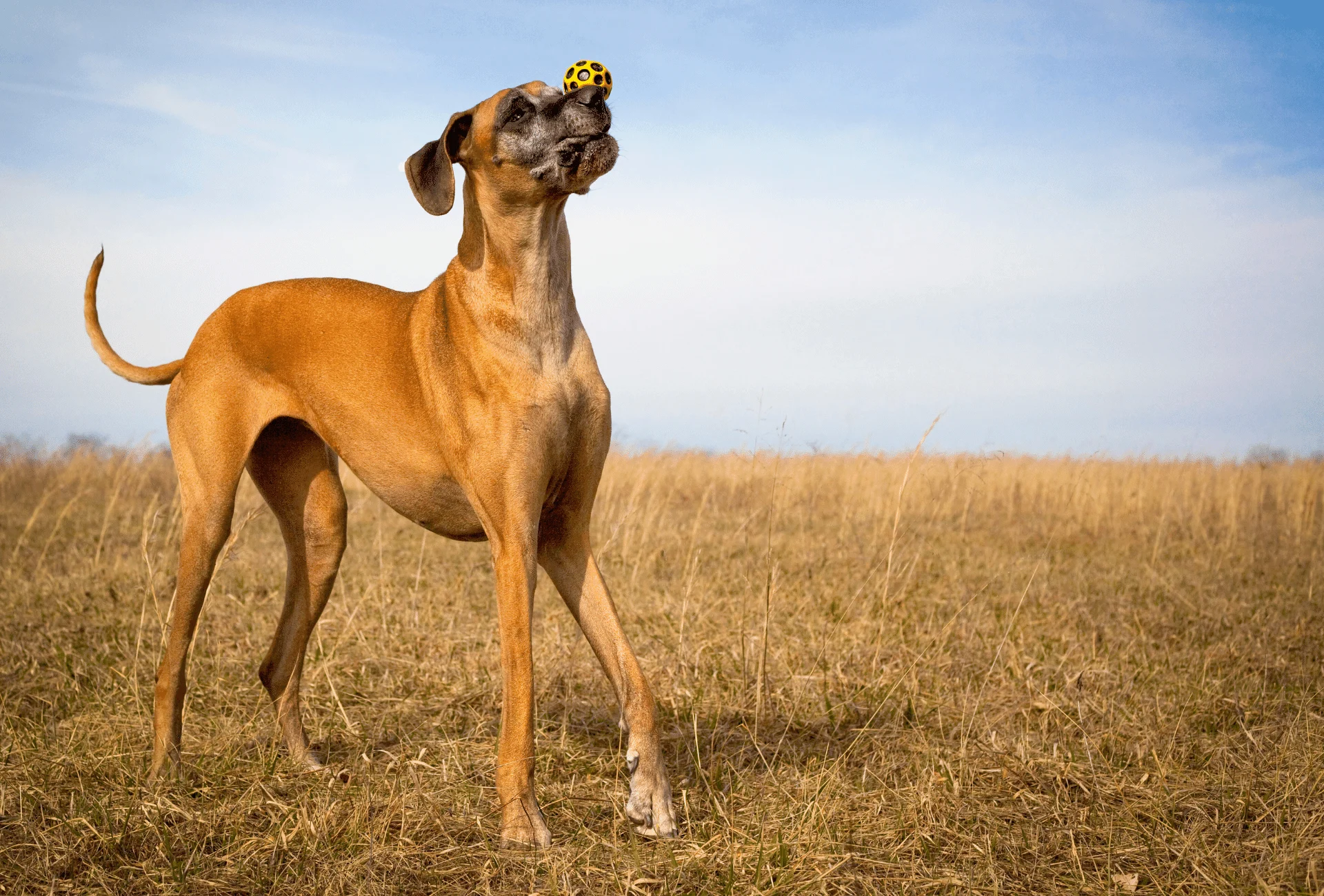
The fawn Great Dane comes with a black (or grey, in case the dilution gene plays a role) mask.
Some might mistake this color of the Great Dane for a Rhodesian Ridgeback since they can resemble each other not only in coat color but also in terms of their tall, slender legs and sometimes muscular body.
Mantle Great Dane
Some of you might recognize this color from another breed – the Boston Terrier.
In some places, the mantle Great Dane is called “Boston Great Dane” because that’s where this color originated.
Black and white with a black blanket extending over the body.
Black skull with white muzzle; white blaze is optional; whole or partial white neck; a white chest; white on whole or part of the forelegs and hind legs; white tipped black tail.
A small white break in the blanket is acceptable. Black pigment may be seen on the skin in white areas.
AKC Great Dane breed standard
It can also be hard to distinguish from the black Great Dane because these types can also have a white chest, they’re missing the white on the neck and muzzle though.
Healthiest Great Dane Colors
Although there’s not a direct correlation between health and color for most of these dogs, there are some health issues you should look out for.
White dogs (especially albino dogs) often have loads of health issues with their eyes and skin.
Recommended Reading: Learn more about how the discovery of the Albino Doberman puppy confused breeding clubs for decades.
Merle with merle pairings can produce equally unhealthy Great Danes.
Apart from that, there are health tests you should look out for when buying your next puppy.
Recommended health tests include the following according to the GDCA (Great Dane Club of America):
- Hip Dysplasia
- GDV (Bloat)
- DCM / Cardiomyopathy
- Hypothyroidism
- Wobbler’s Syndrome
- HOD and Pano
- Cataracts
Hip dysplasia is very common among large and giant breeds and Great Danes are no exception.
Read more about the implication of this and how it relates to arthritic dogs.
Bloat can affect all breeds but according to the GDCA, the Great Dane is even more vulnerable to this condition and it’s said to be the number one cause of death for them.
Avoiding exercise around mealtime can help a great deal.
DCM or cardiomyopathy is a heart disease that can be inherited.
If you’re buying from a breeder, echocardiograms are a must.
Hypothyroidism is caused by the “thyroid gland not producing enough hormone to adequately maintain the dog’s metabolism” but can be easily treated.
For breeding stock, the same rules apply – If a dog suffers from this, don’t breed them.
The Great Dane is among the breeds most prone to Wobbler’s Syndrome.
Sadly, “A Veterinary Medical Database survey revealed that 4.2% of Great Danes have wobblers”.
See the linked resource to learn how Wobbler’s syndrome is identified and treated, despite the causes not being entirely clear.
HOD occurs during the rapid growth of Great Dane puppies which is why you should be very careful with your dog’s diet and beware of signs like early limping (could also be an indication of issues with the hip).
Although uncommon, cataracts can be possible as can other eyelid issues.
CERF exams should ensure that the eyes are healthy.
